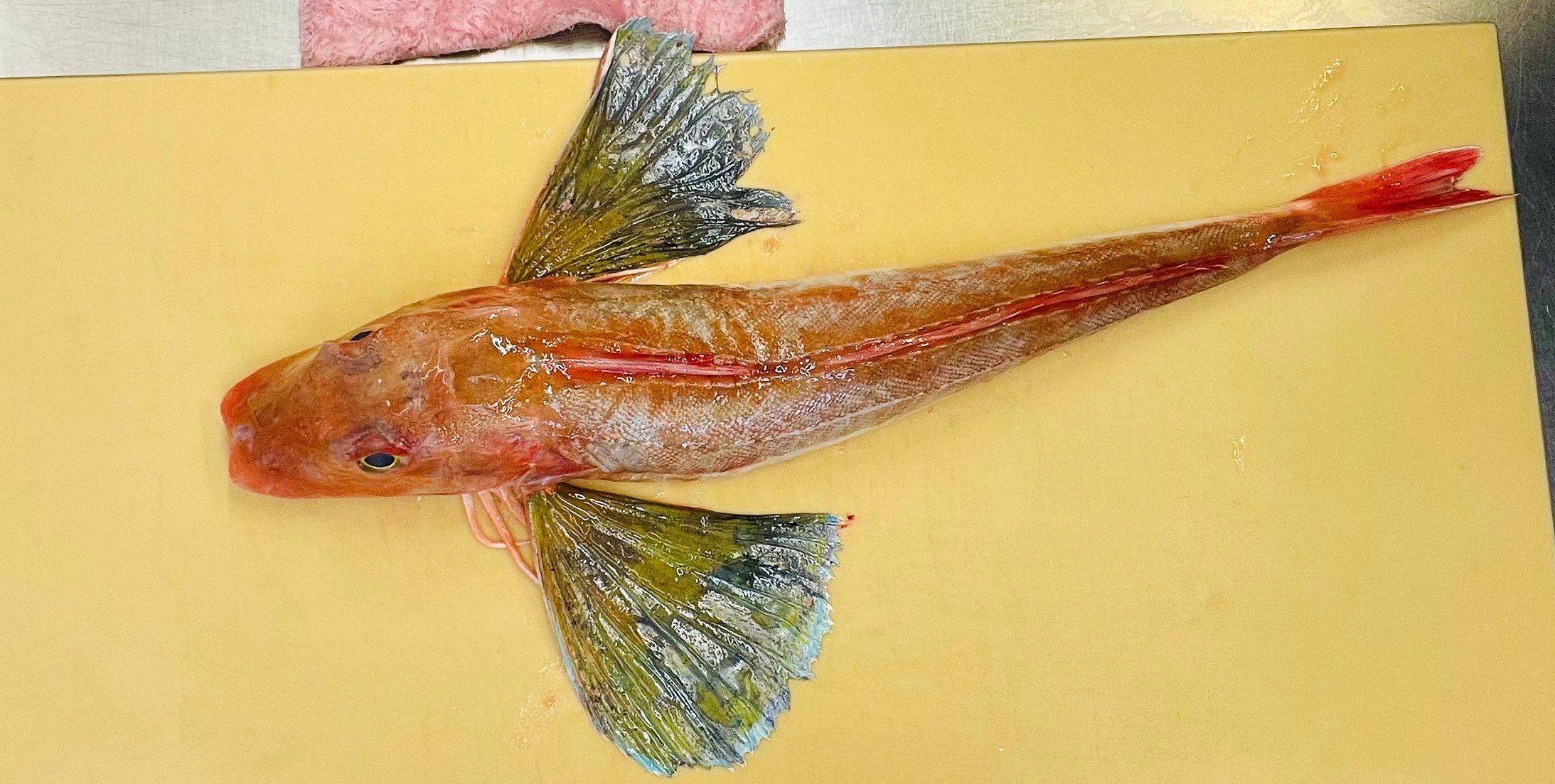
Gurnard
Home | Fish & Recipes | Gurnard
Chelidonichthys cuculus
Biology
The gurnard is an exceptionally strange looking fish- it’s got legs and wings. The ‘legs' are actually modified spines from their pectoral fins, covered in chemoreceptors, that they use to rummage around in the sand smelling around for things to eat. The rest of their pectoral fins have formed wings which they use for defence (like butterfly’s ‘eye’ markings) as well as courtship (like a peacock).
They make a strange croaking sound when pulled out of the sea, which is where their name is supposed to come from, as well as their colloquial names, grunter, croaker and crooner. They're also supposed to warn fishermen of coming storms
Fishing
Gurnards are targeted specifically, despite their rise in popularity. They’re bottom dwellers and as such, often get caught in the nets used to target sole and cod.
Their rise in popularity- due in part to being championed by chefs like Hugh F-W has meant more are being landed. There was a bit of a worry a few years ago because, as they’d never been very popular, no real studies had been carried out on their population size or ability to withstand fishing pressure. Saying that, fishing pressure is still low and they’re certainly not a species you need to worry about just yet.
Eating
AA Gill of The Sunday Times described gurnard as "the Amy Winehouse of fish". Apparently it provides "a sonorous, bluesy mouthful".
Gurnard have dense meaty flesh, almost all of which is found in the tail area. Unlike some white fish, they hold up really well in stews and soups. We tend to skin them (see video), and just chuck them in on the bone.
If you feel like a bit of extra work, you can fillet the tail and ballotine it in sage and pancetta, for a chi-chi starter. Or roast whole with orange peel, bay and thyme. They’re very robust and take on woody herbs and bold flavours very nicely and they’re good friends of the pig- pancetta, bacon, chorizo...








